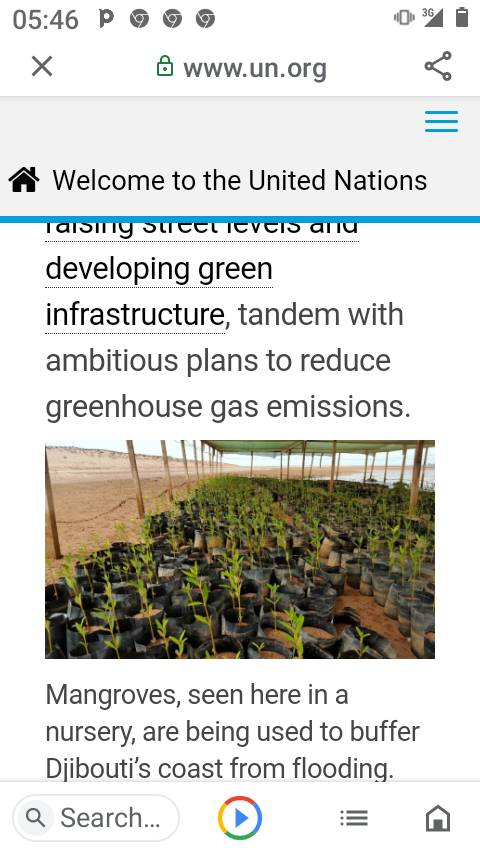change lie in nature. Learn more about ecosystem-based adaptation and six ways that nature can protect us.
For an example of so-called nature-based solutions, find out how communities in Djibouti are staying safe by building flood walls. They are also restoring mangrove forests, which protect against sea-level rise, provide food for people and offer a haven for plants and animals. In Viet Nam, coastal farmers have turned from collecting increasingly scarce marine resources such as snails and crabs to developing beekeeping linked to mangrove restoration.
In Albania, one of the countries in Europe hardest hit by coastal erosion, restoring vegetation on the Kune-Vain Lagoon protects shoreline communities. It also helps sustain a globally recognized corridor for migrating birds.
It might seem like nature-based solutions are mostly for the countryside. But cities are also boosting resilience by turning to nature. In El Salvador, the capital, San Salvador, aims to become a “sponge city” by restoring surrounding forests to limit landslides and floods, and improving drainage in ways that mimic natural streams and rivers.
In the United States, the coastal city of Miami is raising street levels and developing green infrastructure, tandem with ambitious plans to reduce greenhouse gas emissions.
Mangroves, seen here in a nursery, are being used to buffer Djibouti’s coast from flooding.
Mangroves, seen here in a nursery, are being used to buffer Djibouti’s coast from flooding. Photo: Ministry of Habitat, Urbanism and Environment, Djibouti.
Explore more
The Adaptation Gap Report chronicles slow progress in climate adaptation, for reasons that include a lack of finance, and showcases nature-based solutions. Seven lessons on adapting to climate change draws on experiences to date.
How can the world save 23,000 lives and gain $162 billion in benefits a year? By improving weather forecasts, early warning systems and climate information. See the Hydromet Gap Report.
Adapt Now, from the Global Commission on Adaptation, details benefits from adaptation to urge action by governments, businesses, investors and community leaders. The Economic Case for Nature shows how protecting ecosystems can avoid trillions in losses to national economies.
A practical guide to climate-resilient buildings offers tips for construction, especially in communities with few professionally trained architects and engineers.
One more consideration is closing the digital divide to generate more and better data and predict climate risks in time.
Read up on the science


